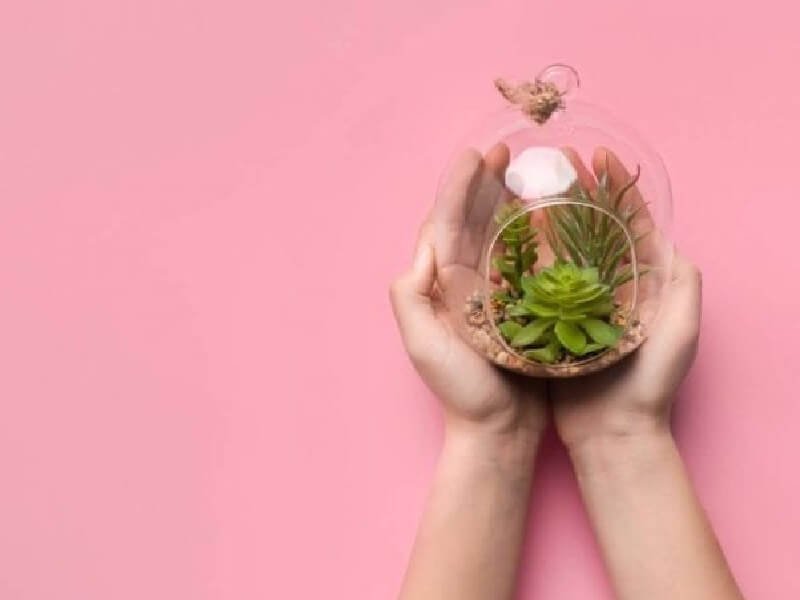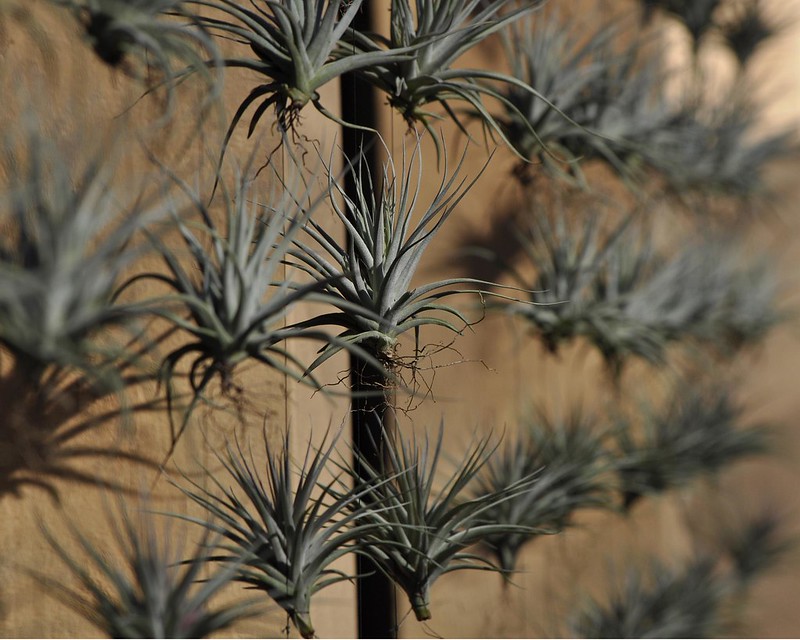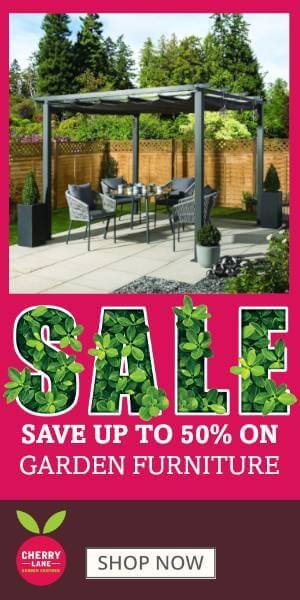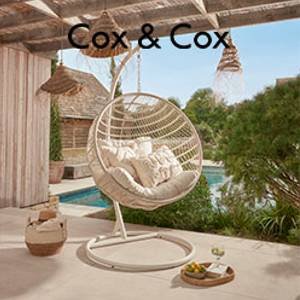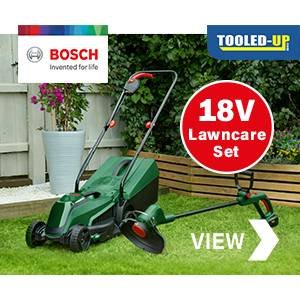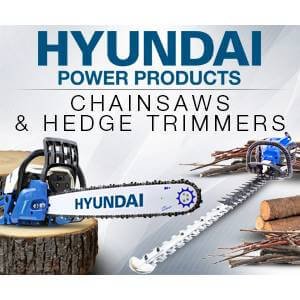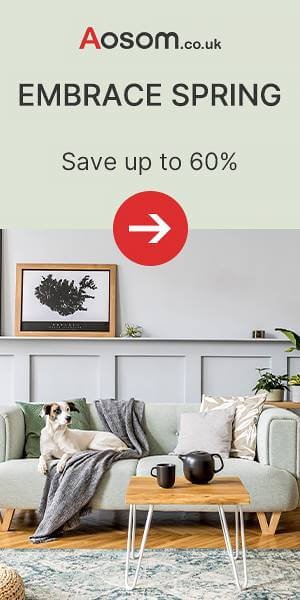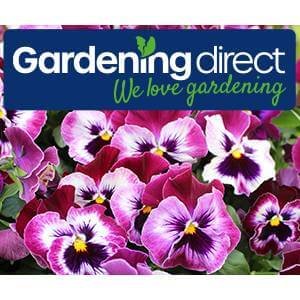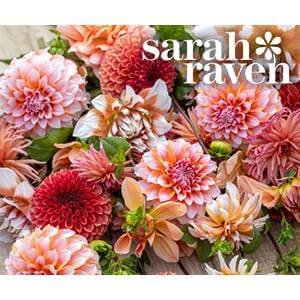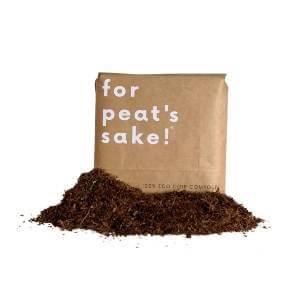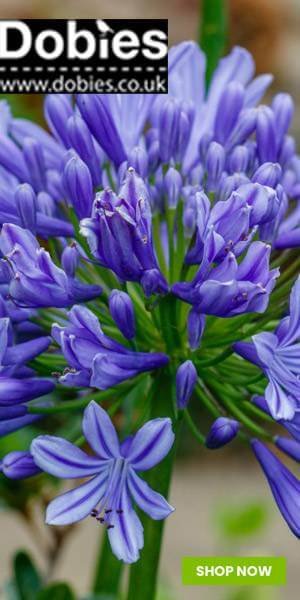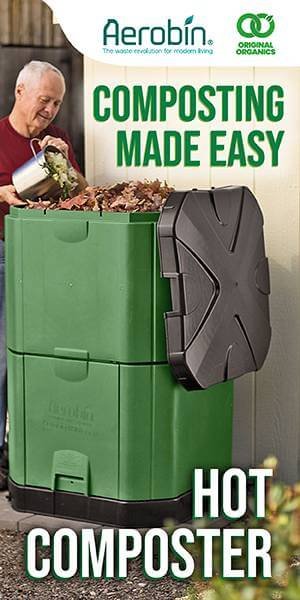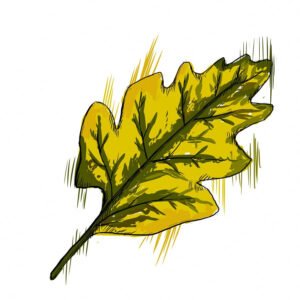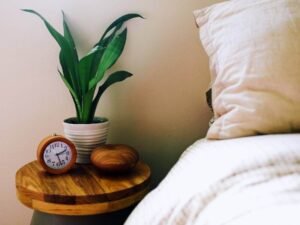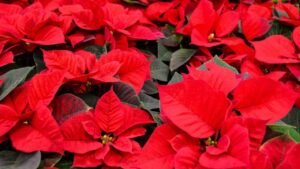Do you want something that looks unique, is space-saving and low maintenance? Well, look no further! Terrariums are known as an indoor greenhouse in a container; terrariums are simply a beautiful mini garden.
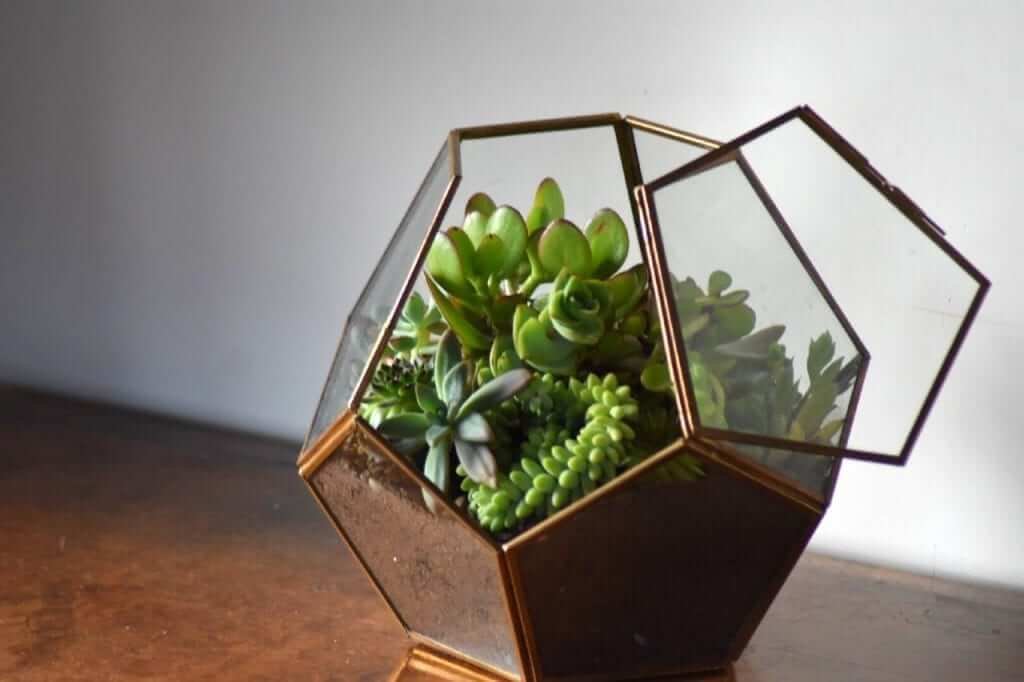
What are terrariums?
So, the best place to start is – what is a terrarium, and what can we learn from them? Well, terrariums, as mentioned above, are a small collection of plants that grow in a transparent container, like a mini greenhouse. They are either an open or closed environment and illustrate how an ecosystem works, and are typically more decorative items in the home (but do not forget they still need a bit of care).
These self-nourishing plants have many natural processes that can be observed within the walls of a terrarium; photosynthesis, respiration, and the water cycle. The water is being constantly recycled, passing from liquid to gas and back again. The moisture in the air condenses on the glass walls, it then trickles down and returns to the soil and is absorbed by the plant roots -– which we think is pretty cool!
Caring for terrariums
If looked after well, terrariums can last years and years, we’ve put together a general guide on how to look after your terrariums:
- Unlike your other indoor plants your terrariums do not need to be watered as often this is not only due to their self-nourishing property but also these are hardy plants. We would recommend watering for open 3-6 weeks and for closed once a month – you can find specific details are below.
- Placing terrariums in indirect sunlight is the best position.
- If you spot yellow or brown leaves on any of the plants or mouldy pieces in your terrariums remove these as this is typically a sign of disease or pests – this will also stop it from going mouldy.
- Keep an eye on your plants prune them back if they grow too big for their container if you don’t do this; one plant can start to dominate the container.
- Placing in an indirect light spot that provides plenty of light and also provides warmth for the plants.
- Rotating your terrarium around now and then will ensure that it gets the same amount of light and it will grow evenly.
- Your terrarium should smell somewhat earthy – if it starts smelling bad then this is a good indicator that it has begun to rot.
- Be sure not to place next to radiators; this heat can also kill your plants.Be sure not to place next to radiators; this heat can also kill your plants.
- Cleaning the terrarium glass both inside and out is an excellent idea for the aesthetics and your plants. If the terrarium gets too dirty it can be harder to light to reach inside.
- Using a mister or sprayer for watering your terrarium is also better than pouring directly onto plants.
- Now one final tip choosing your plants is also vital as some will love open terrariums but others will thrive in closed terrariums. See below for which work best in each.
Water your terrarium with a syringe, this is especially useful if you have two different plants and one requires a bit more water. You can then direct more water into the soil around the one that requires more.

Pests and Diseases
When buying your terrarium plants, it is best to scan over them for bugs which could potentially be a problem. We would also recommend not to add them plants straight into your container so that you can monitor for any diseases or pests.
In the long run, this will save you time and money. Not to say it’s easy to catch these pests, even us with a green thumb can run into troubles – insect eggs are tiny, along with microscopic bacteria and even mould spores, which are all things that can go easily undetected.
Try your best to monitor regularly; this can prevent the development of serious problems. If you do happen to find any pests or diseases, first of all, carefully remove these. For larger terrariums, buy an insecticidal soap or horticultural oil, this can be applied directly onto the plants to keep pests away.
If the problem is severe, it may be easier just to remove the whole plant itself.
Buy pebbles or rocks for your terrariums that will deter gnats and help a bit with over-watering.
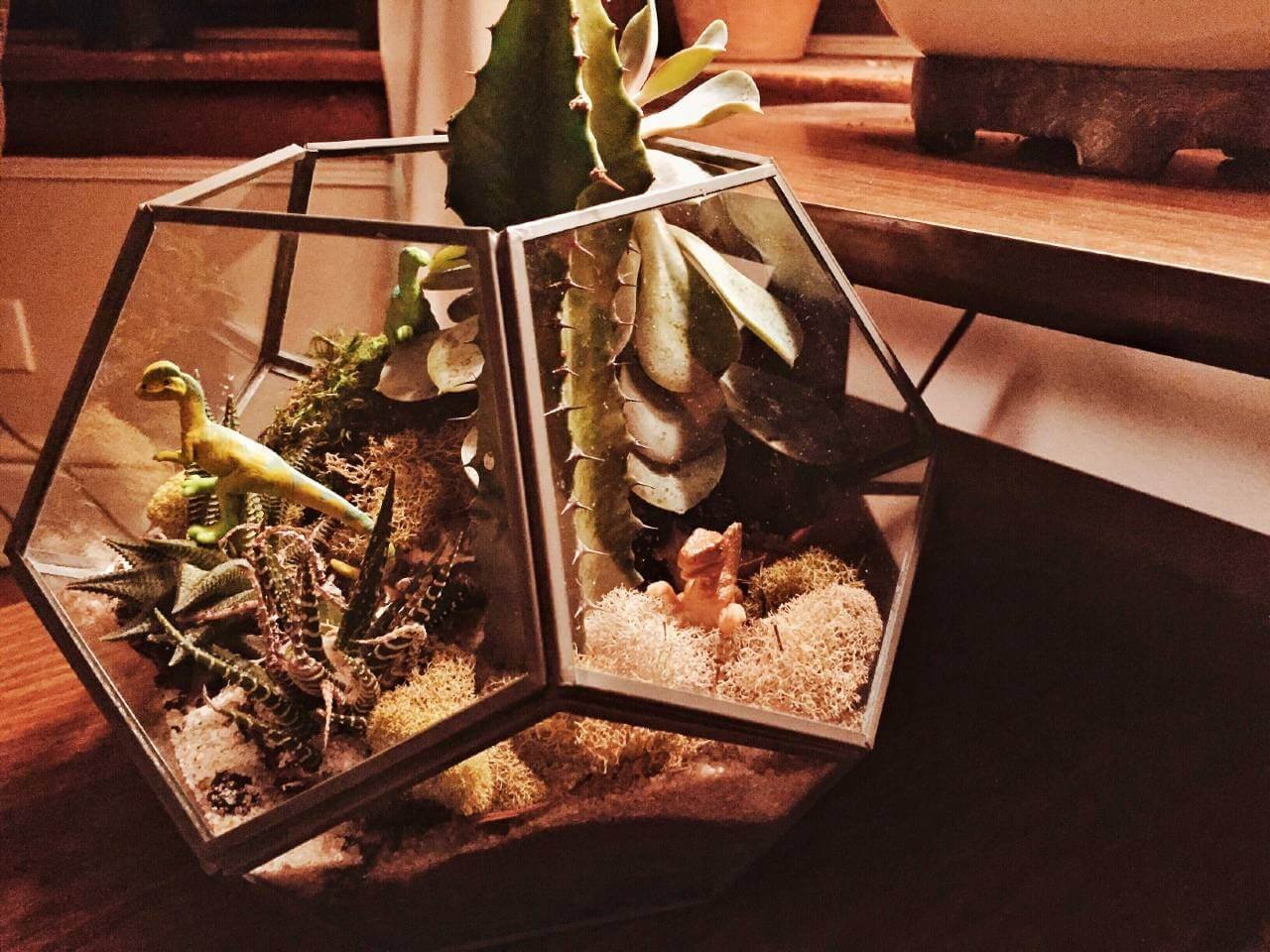
Open terrariums
The container is super vital As you may have guessed open terrariums are permanently open to the outside environment, this means your terrarium will get a lot of air circulation and less humidity inside.
Watering your open terrarium every 3-6 weeks or when they may look like they need it and providing them with lots of direct sunlight will ensure that they will stay healthy.
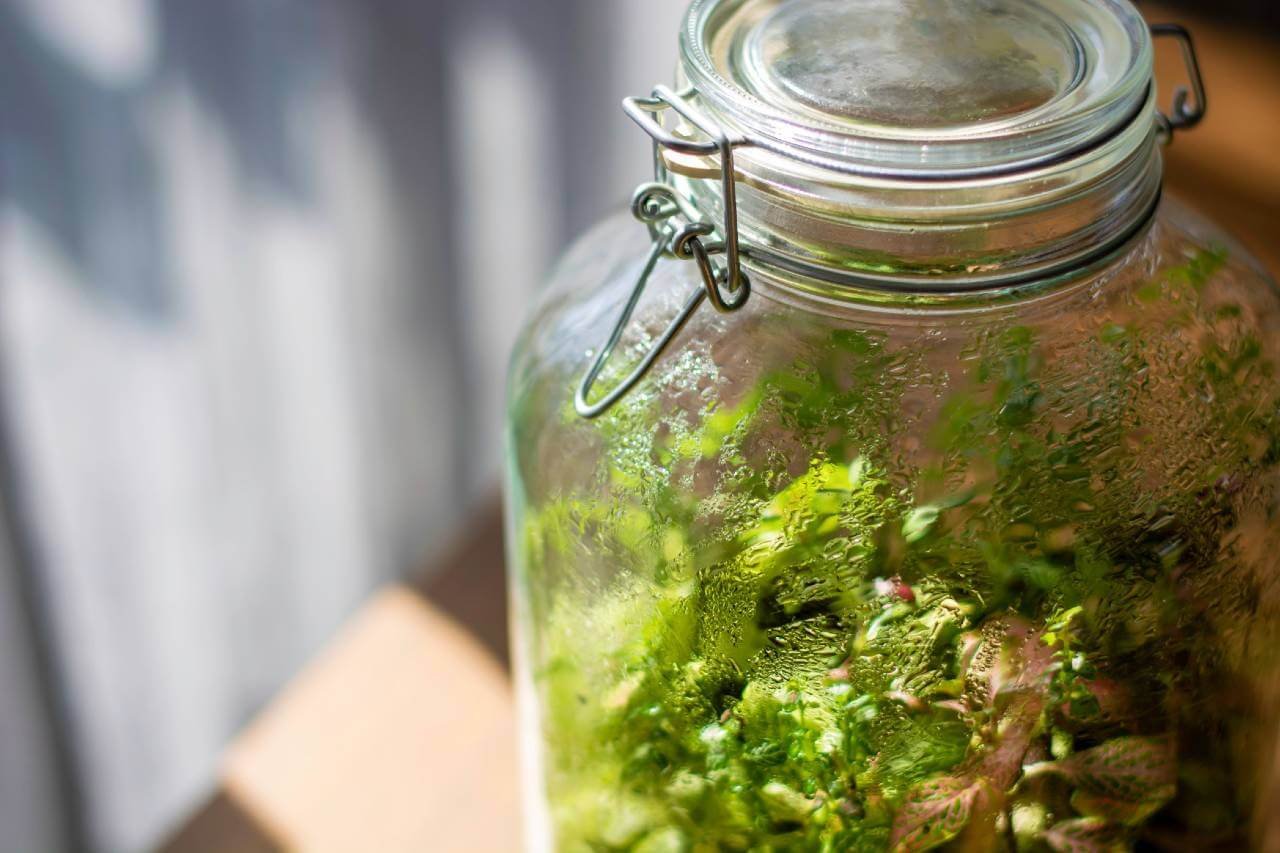
Closed terrariums
Closed terrariums require very little maintenance; they need to be kept out of direct sunlight, as the containers can hit up quickly becoming too hot, which can easily damage or kill plants inside.
Quick tip though if you want to place your terrarium in direct sunlight you can do so, be sure to take the lid off! We also recommend that your closed terrarium will need some air every couple of weeks, so take the top off, leaving it off for a few days.
In regards to watering your closed terrarium, we advise on average once a month.
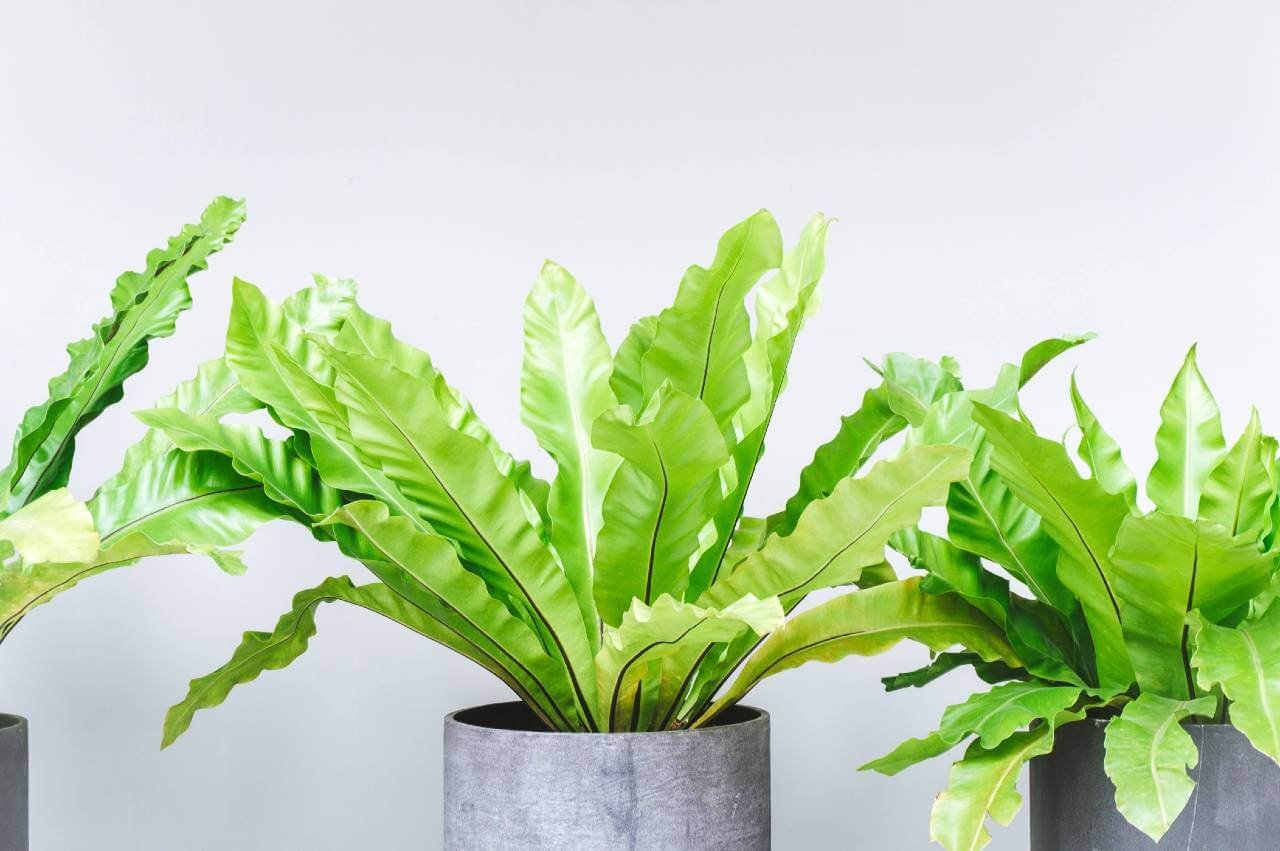
What are the best plants for terrariums, and why?
There are a few plants that work well inside terrariums, and even some are quite hard to grow not in them. We’ve picked a small sample of the below options that are our favourites (yes, this was a hard job) and added a few interesting facts about them:
- Air Plants
- Carnivorous plants
- Fern plants
However, the below list is some other options that you may decide to use; you can also read all about these on our plant directory:
- Orchids
- Bromeliads
- Creeping fig (although this will need to be trimmed regularly)
- Pothos (also another one that will need to be pruned)
- Sun Pitchers or Heliamphora
- Nerve Plants
- Cephalotus Follicularis
- Butterworts or Pinguicula
- Bladderworts or Utricularia
- Dewy Pine or Drosophyllum lusitanicum
- The American Pitcher Plants or Sarracenia
- Syngonanthus Chrysanthus or Mikado Plant
- Carnivorous plants
Air Plants – Tillandsia
These are an unusual looking plant that almost looks like they are not from this plant. Originally from Mexico and South America, they are one of the oldest members of the plant kingdom.
Due to their origin coming from the desert, they love temperatures of 50-90 degrees, making them the perfect plant for terrariums, and they also love indirect bright sunlight.
These striking plants get their name from their short, wiry roots which they use to attach themselves to anything really – branches; cliff faces you name it; this is instead of rooting in the soil; as well as this, water is also absorbed through their leaves.
In general, air plants are best for open terrariums. The first reason is due to the frequency that they need watering, albeit not as much as your other plants (so don’t worry). It is best to water your air plants once a week – although this can be dependent on your home, if you find your home is particularly dry, we would recommend watering every five days, and in humid environments every ten days.
However, your air plant will let you know when it needs more water as the tip of its leaves will turn brown and curl. If the leaves turn brown or soggy then this will be a sign that you are overwatering, if it has become black, however, this means that unfortunately your terrarium can no longer be saved as it has rotted.
Combined with this air plants don’t like being too humid or wet – so open terrariums are suited best for them.
To water your air plants, start by soaking your air plant in water before placing them inside a terrarium is ideal. Fully submerge them in water for around 10 to 30 minutes, making sure when you take them out there is a towel nearby to spread them to dry.
Before placing them inside your terrarium, make sure they are completely dry as you don’t want them to become waterlogged. If your air plants, however, are boasting a flower bloom – do not submerge the actual flower into the water, only the body.
We also recommend pond water, aquarium or rainwater as the preferred options; however, bottled water or even tap water can be used. In between watering, sometimes it is good to mist your air plant.
There are more than 550 varieties of air plants, which make them hard to identify and to make matters even harder is that in different climates two plants of the same variety may look completely different.
Although we would love to put every air plant in a terrarium, we’ve narrowed the list down to our top 2 favourite plants that you could potentially use.
Tillandsia Stricta Black Tip
This variety is a small-to-medium size that is one of the most straightforward varieties to grow; its dark green pointed vertical leaves make it stand out in a transparent container!
These only need a light misting weekly, and most commonly only die when the water has built up in the centre of the plant for too long. They typically prefer a hot, dry environment, but like most other plants they will burn if placed in direct sunlight, leaving unsightly marks on the plant.
They love indirect, natural sunlight and even office fluorescent lighting. We love this air plant as it’s one of the easiest air plants to grow and look after!
Ionantha’ Conehead
The hint is in the name conehead – this spiky looking pinecone variety produces a beautiful purple flower spike that looks stunning.
These leaves are more upright than other varieties of plants which is the main character it receives its name. We think these look stunning in an open terrarium with the top of their spikes hanging out, or equally as decoration with other plants.
These do require very little water, and unlike other air plants, they dislike being submerged in water. If they are looking a little dry, you run them under a bit of water – be sure this isn’t too much they also dislike water trapped in the leaves.
If you do notice water trapped in the leaves, make sure you turn your air plant upside down to dry out before placing back. These do great in partial shade and try to avoid direct sunlight as these will typically dry out, and the leaves can burn, these do great in office environments though!
Succulents
Like air plants, succulents do well inside terrariums. These tropical plants like humid conditions and can be found all over the World (Antarctica is, in fact, the only continent that has no native species of succulent!) and almost exclusively in warm places that have periods of drought; meaning they are used to periods without a lot of water.
A few critics do mention how succulents are not good inside terrariums, which is true if you are planning on using a closed terrarium – which we would 100% recommend against, these will only ever suit an open container and will almost certainly die if they are in a closed container.
Although still a relatively easy plant to look after (actually one of easiest varieties), like many others the general rule is to water thoroughly and wait for the soil to dry out which is the same for most of the succulents.
Due to the native area they derive from, they are accustomed to drier conditions, combined with their leaves, roots and stem store water, so, therefore, can survive if you accidentally forget to water – don’t let them become bone dry!
We recommend watering around the base using a baster or syringe, as most succulents will not like water being poured directly over them and generally will not like being misted; always use non-chlorinated water, rainwater is a good option.
During the summertime, we would recommend checking for dryness every 14-21 days, and during the Winter every 3-4 weeks, and around 1 or 2 tablespoons worth.
Succulents need a particular type of soil; this should be a faster draining porous soil; you can either buy specific succulent/cacti soil from almost every garden centre. Another option is that you can make your soil – just by using regular potting soil, and mixing with the most crucial ingredient sand we recommend buying coarse sand, but you can use any type.
Succulents can run into a few problems, so here are a few tricks and tips to keeping your plants healthy. The first is the position, try to place it in sunny spaces; if you notice that your succulent has grown tall and leggy or bent in one direction then it is not receiving enough light, try moving this to a brighter location, and this should help.
I suppose you could say succulents thrive on neglect; we would recommend that you add fertiliser once a year – which adds a natural appearance back to your terrarium.
Succulents come in many different varieties, shapes and sizes, and as mentioned, they all can be treated reasonably equally. Although there is a wide range of succulents to pick from, we have recommended two straightforward ones to look after below.
Still, succulents that can hang over your open terrarium also do look simply stunning.
Sempervivum tectorum – Hens and Chicken
Sempervivum in Latin meaning ‘live forever’; they will typically not require much care due to their hardiness and being drought resistant. We would recommend watering once a week sometimes even twice, but it’s good to remember that in the spring/summer seasons they will need more.
There are a few varieties of sempervivum succulents, the original rosette is named the hen, and the tiny rosette offsets are known as the chicken. Perfect for an open terrarium they grow well indoors with full sun and partial shade, however placing in deep shade is not the best for them.
Haworthia fasciata – Zebra Plant
This small succulent is perfect for inside an open terrarium, growing in a rosette shape, this eye-catching plant can reach the maximum height of 5-8 inches in height, making it ideal for an open terrarium.
Receiving its name from its white striped pattern, it usually flowers in springtime and produces white flowers. This succulent is best placed where they receive plenty of sun and bright light.
Although these are prone to rot quickly when they are overwatered, a general rule like most other succulents is to let the soil completely dry before watering again, which leads to the fact that the soil for these should be well-draining, which will prevent moisture building up.
It is also good to note that they can survive even when they have a lack of water – so it’s better to under than over water. What’s also a plus is that these are not toxic to cats and dogs.
Ferns
There aren’t too many plants that do too well inside a closed terrarium, compared to all the options you can put inside an open, which is pretty much anything. But these moisture-loving plants will be very low maintenance and will survive well inside a closed terrarium – due to the fact they thrive being in moist conditions.
When choosing what fern you want in your terrarium, be sure to make sure they are of the smaller, slow-growing varieties, you ideally want it to grow no bigger than 6-12 inches at maturity. You do have to be careful which fern you pick; you do need a moisture-loving plant that loves indirect, no bright light.
Specifically, inside a terrarium, the best ferns to use are slow-growing small varieties that will reach potentially between 6 – 12 inches at maturity. By picking a slow-growing species, you won’t have to prune as often, however, pruning occasional or pinching off new growth this will not only keep them tidy but also encourage fuller growth.
Primarily, this will ensure they don’t grow too big for the terrarium. One good tip we recommend, if you notice a lot of condensation forming around the sides and is continually dropping, then your terrarium is too wet.
Start by removing the cover of the terrarium until the condensation has evaporated from both sides and then replace. As mentioned above, you should be taking the cover off every few days to stop diseases and bad smells.
If you also notice that your fern is starting to get brown tips at the end of it leaves this is an indication that your terrarium requires higher levels of humidity.
Care for almost all ferns are typically the same, and also very easy, which makes them a perfect choice for closed terrariums. They are relatively tolerant of a wide range of soil conditions, and do excellent in shady areas, and also the ideal opportunity to complement any plants that need shading – so you can always find a space for them – even outside!
They will all typically thrive and grow in any moist well-drained soil, (neutral- alkaline). Although we do find with a normal potting most should be fine in a terrarium due to the drainage levels.
In general, we would recommend misting your ferns once a week, but a good rule of thumb is to look at the soil, if it looks damp almost a dark colour then there is no need to mist, but if it looks dry then you should mist.
There are more than 900 species of ferns around the world, and they are found mostly in tropical forests. As mentioned above only a few small species of ferns work well inside terrariums, we’ve picked our two absolute favourites, but check out here for other types of ferns you can use.
Lemon Button Fern – Nephrolepis cordifolia
We know we shouldn’t be biased, but we have a special love for this adorable plant, and we cannot get enough of it. This is the smallest type of Boston fern, and due to its slow-growing nature it will grow typically up to 10 inches long, and although it has tiny leaves, it will make a statement in your terrariums.
What makes it even better, in comparison to other ferns this is easy to care for, preferring medium to bright indirect or filtered sunlight, be sure you don’t let it completely dry out – they prefer a moist environment.
It is also best with these to make sure the planter avoids coming in contact with the container as this may cause fungal growth.
The slightly yellowish-green leaves when crushed are said to smell of lemons (in case you are wondering where the name comes from).
Southern Maidenhair Fern – Adiantum capillus-veneris
Also known as the Venus hair fern, native to the southern United States and tropical areas to the south – hence the name, and belonging to a genus that is one of the slower-growing, makes this small fern perfect for closed terrariums.
Combined with this, it also prefers shaded to partially shaded, small containers and does not like being repotted, which is a win, win for your containers. Growing to the maximum potential of 12 inches, these look best towards the back of the terrarium! This plant recovers quickly and is very tolerant, like with most ferns keep this one moist, and try not to let it dry out.
However, if you do accidentally let it dry out, try to give it a good soaking before throwing it out as it may eventually produce new leaves. We would recommend humus, fertile soil.
Interesting fact – these are listed endangered species in North Carolina.
Layers in your terrariums
The layers in your terrariums are so vital to its overall maintenance and health, without layers in your terrarium it can ultimately become a swamp. There are four vital layers inside your terrariums:
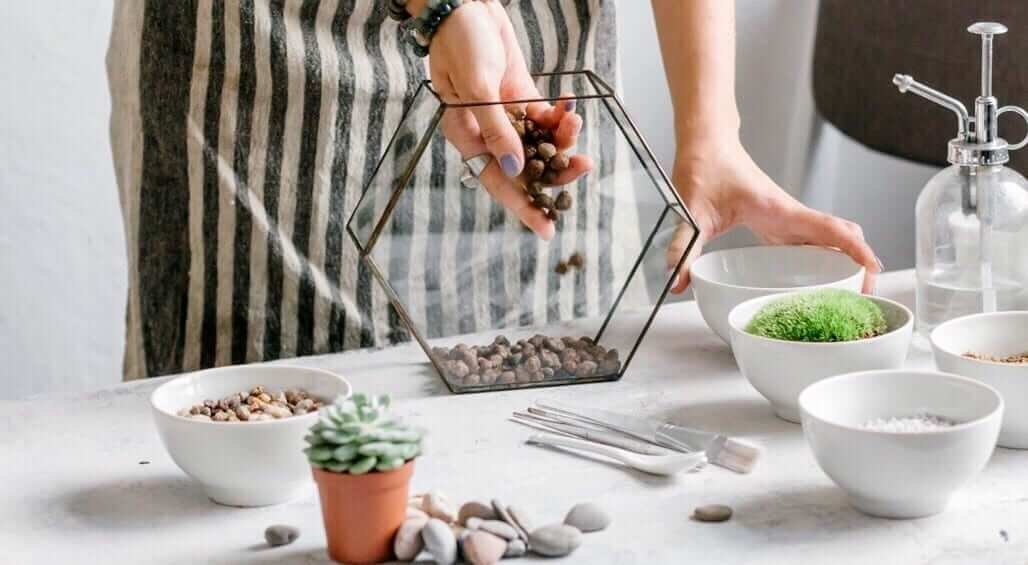
Drainage Layer
The first most important level for your terrarium is the drainage level. As the water drains down through the soil, this will ensure that it has somewhere to go as the soil does not get too wet.
Porous is the best material for this level; for example, small pebbles, gravel or sand are a perfect example as they allow liquid and air to grow and won’t retain moisture. So I bet you’re wondering why this level is so important?
Well with this necessary level your terrarium will thrive, it means the roots of your plant won’t rot, stopping them from becoming damaged or killing them. Although it is best to be careful with how much you water – if you over water, then this could mean the water will pile up at the bottom, and the moisture can cause root rot quicker.
We have had this problem many times especially with orchids, but we have a sly trick for this below in making your section if this is something you are conscious of, but want your terrarium to look like it has all the layers.
It’s a good tip to know that the bigger your terrarium is, the thicker you will need your drainage level to be.
Charcoal Layer
This level is especially important if you have a closed terrarium, as this removes odours and toxins from inside.
In case you are wondering how these can build up inside this can be a build from mould, mildew, decomposing soil and the plants themselves; and this level helps by purifying the air creating a healthy environment for growth.
You can typically find activated charcoal from local pet stores, as these are usually used in fish aquariums to cleanse the water. Be sure to get the small black pellets and not the powder charcoal!
If you decide not to add this layer to your closed terrarium, ensure you open the lid for a few hours each day, this will make sure that there is a good air circulation inside. Also, make sure you if you do this you water more frequently as moisture and humidity will escape.
If you are using air plants you don’t need a charcoal layer!
Moss Layer
The third layer is the moss layer, and this is entirely optional to your preference if you want to add or not, this adds not only a great natural look in your terrariums.
The benefit of this is that it will help provide even more moisture to be collected inside. This also helps with the separation of the layers as it stops the soil from dropping down into the drainage system.
It’s good to note that you only need just enough to make a soft thick layer, to stop the soil leaking through – you don’t need too much.
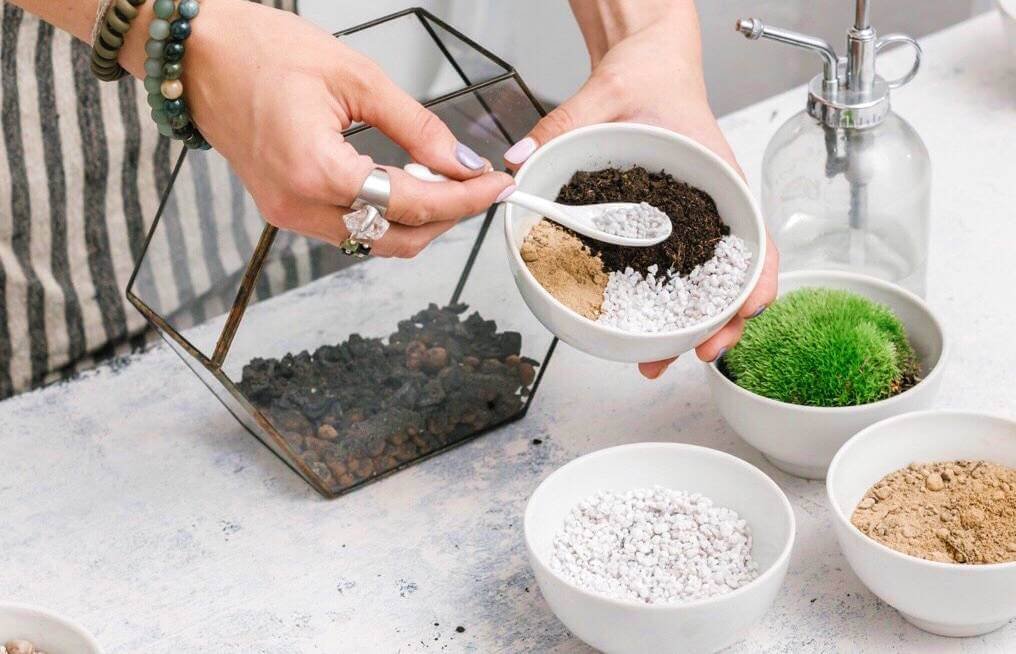
Soil Layer
The last layer is soil; this will provide your plant with the right nutrients it needs to survive, the soil for terrariums that you can buy from many gardening stores is rich in organic matter and sand premixed already.
Equally, you can buy good quality organic soil and mix in coarse sand (it is good to note that you should not use sand from beaches or anywhere else you can help yourself – these will most likely contain bacteria that could potentially be harmful to your terrariums).
Make sure that when you plant the flower in the terrarium ensuring they are firmly rooted in the soil, this will stop the risk of them toppling over when they grow.
Ornamental Layer
The ornamental layer is the final layer and is entirely optional for you because it is purely for aesthetics.
Still, despite this, it does have a secondary function as it can help protect any roots that could be exposed from direct sunlight and also another supportive layer for your plants.
If you need any ideas for what materials to use for the decorative layer, read the steps below on how to make your own.
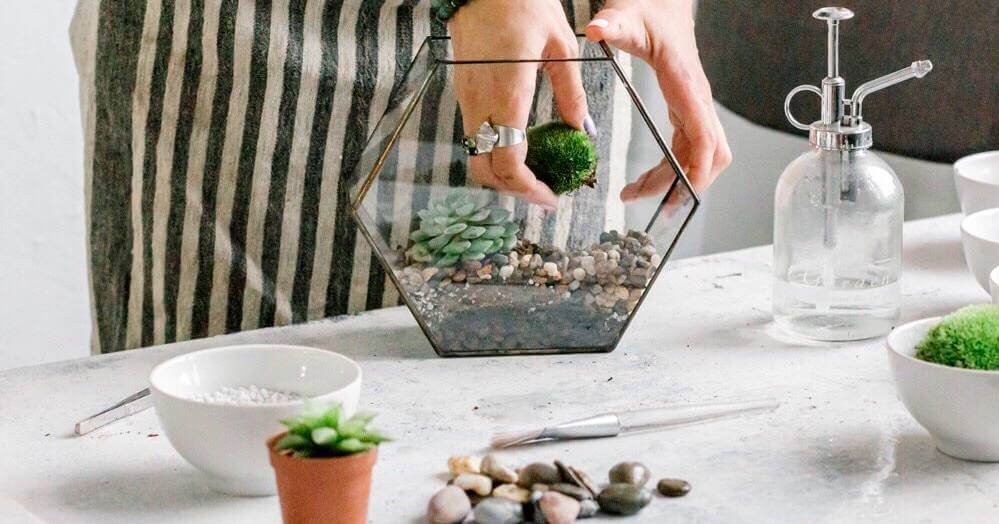
Making your own Terrarium
Making your terrariums is super easy, and the benefit of making your own is that you can place what you like inside. These are a great idea to prepare for a girly night in with friends, or as a family on a rainy day – and we also think they’re an excellent gift for anyone.
There are two types of containers you can make, either sealed or open – sealed versions have a removable lid, while open do not. Both look great either way with the opening allowing the spikes or leaves to hang out, while the sealed creating the inside a small greenhouse/garden feel.
The items you’ll need are:
- A glass or plastic clear container (maybe look at recycling an old cookie or pickle jar or even a goldfish bowl)
- Either rocks or moss your choice or both
- Soil (medium growing)
- A plant to go inside – take your pick from either the options above or a slow-growing or miniature plant
- A spoon for adding the soil (if you have a small terrarium)
- Long tweezers for place materials in the places you want (if you have a small terrarium)
One suggestion before we go any further if you are planning on using a variety of air plants is to have them inside a container on their own; we think that this looks amazingly simplistic with the added element of being unique and quirky!
You can even have them hanging from the ceiling, which looks fantastic!
Anyway, back to your step by step guide;
- The first step albeit quite obvious is to select your container whether this is open or closed – be sure to check that the plant you desire will survive well in this container. Be sure if you are recycling a container to clean this out killing any bacteria that may be lingering inside.
- Now as mentioned above in the drainage layer if you are confident enough that you won’t overwater then go ahead and add the first layer of your chosen porous material we find that just pouring this straight in is the easiest method. You should be aiming to make this layer 11/2 inch thick.
- If however you would instead take a more cautious route (which we do) start by first adding the charcoal layer and about a cup full of potting soil (steps below) in doing this try to create a cone shape from the bottom up and making sure you leave a small gap going around the edges. In the small gap around the edge this is where you will add your faux layer of stones – ensuring that you get the natural look in your terrariums. We also find that moving the stones so you have a higher/more of a layer at the front. The next step is the soil layer so see one step below:
- The next step is to add a very thin layer of the active charcoal (small pellets) using a spoon and equally spread around the container be careful you don’t want to add too much. We suggest about an inch.
- Now this step is entirely optional – the moss layer. It’s best not to add too much as this is just the separation level and also you can always layer some later to the top. If you have taken our recommended steps then this separation level isn’t vital at all.
- Soil is the life of your plants; we recommend filling the container up a third of the way with your chosen soil making sure your plants like and can thrive in this correct soil.
- The next step is now time to add your plants. Start by removing your plants from their pots carefully teasing their roots apart; it is also best to remove some of the old soil and pot them into the terrarium.
- The last layer is the decorative layer and as mentioned above is entirely optional so feel free to skip if you do not want to add these. However just layer these on top of the soil carefully lifting your plants leaves as you go. Use a towel if large enough to wipe the inside of the glass just in case any soil is spilt around the edges or if you have a smaller container a paintbrush and completely personalise how you would like. Below are some options that we love although reindeer moss looks great
- Mood moss would be a more practical choice as it’s preserved and you won’t need to water or keep moist); another option would also be adding a small air plant on the top of some stones.
- And finally you can sit back and admire your hard work after giving it a quick mist. Then placing it in the right spot with an indirect light also provides warmth for the plants.
DIY Terrarium kits
However, we understand that sometimes this is a lot of effort and even money, so if you want to take the easy, but still fun route – here are some great options we have found for you:
Our thoughts...
We love this set from Amazon; it’s a great way to start your terrarium collection and even better way to learn how to start creating your indoor environment. It has everything you need inside, so there is no stress that you will have missed something in your shop.
It also comes with a step to step guide, which is super handy, and this also only takes half an hour! There are many different sets that this company offers so you can even choose what plant you want! We also think these are the perfect gifts!
Our thoughts...
Although a slightly more pricey option on the list, you will soon understand why! Not only can you choose between different sizes and colours – making it super personal for you!
The container is effortlessly cool and looks so unique – it’s perfect for any room.
Everything about this is to a high-quality standard, and you really can’t go wrong.
Our thoughts...
This option is an excellent idea if you are 100% new to and want all the guidance you can get – it includes a 15-page guide to learn all the arts and science behind making your terrarium (which we love)!
This company also has a variety of starter kits so if you want to learn how to grow your herbs or bonsai tree – this is a great start! What’s even better is that it includes the mister which you will love. The only thing you will need is the container and the plants.
Let's go Shopping...
Products Coming Soon!

